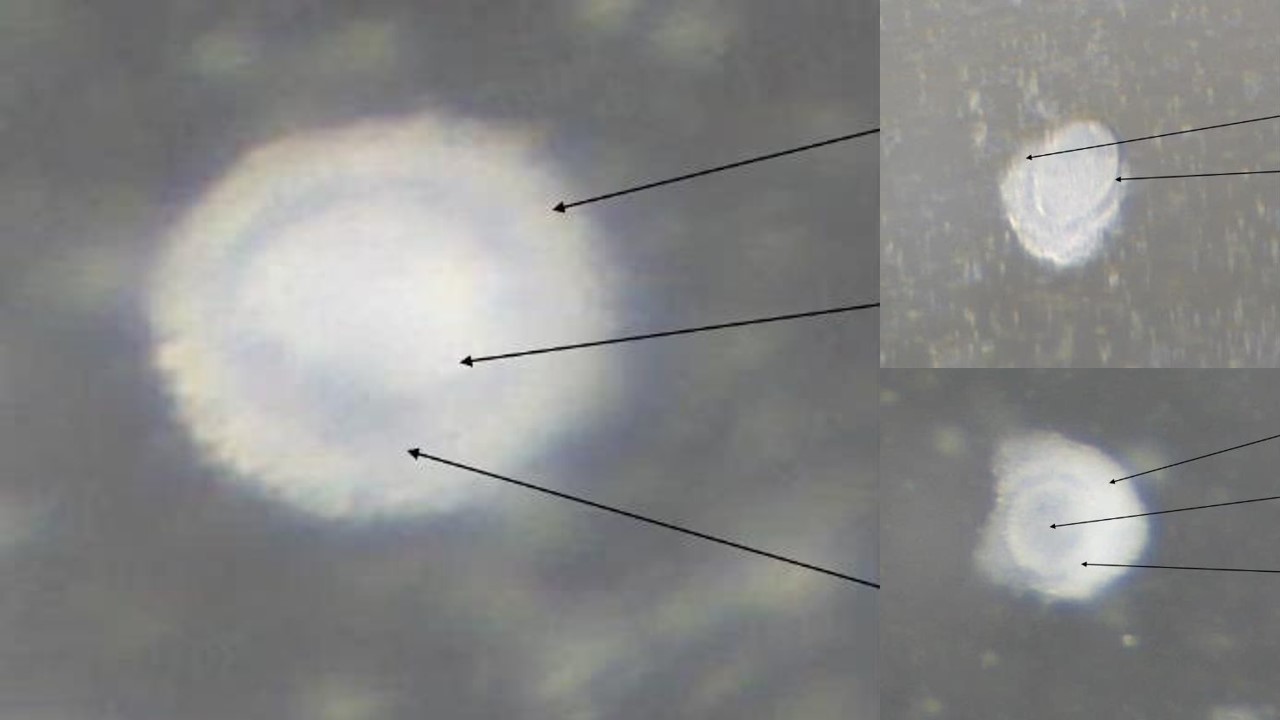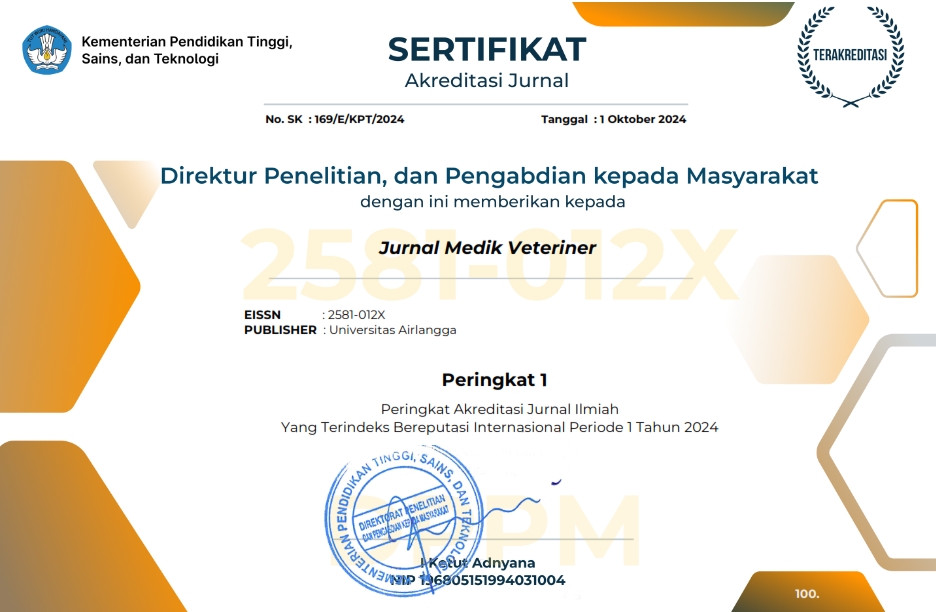Ovum Pick-Up and Ovaries Characterization of Black Bengal Goat from Slaughterhouse

Black Bengal goat is the only indigenous breed in Bangladesh. These are small-sized goats renowned for their high-quality meat, skin, and adaptability to adverse environmental conditions. To conserve the originality of this species, it is mandatory to develop an effective methodology for their germ cells to be harvested after death. Therefore, the study was conducted to assess the ovarian status and evaluate the most suitable method of ovum pick-up as well as the characterization of ovum from slaughterhouse specimens. A total of 182 ovaries were collected from local slaughterhouses from June 2022 to July 2023 and grossly examined to assess their status. Two methods were used to retrieve oocytes from the ovaries: aspiration and slicing. The grading of the ovum was done based on the germ layer present surrounding the oocytes. From 182 ovaries, the rates of corpus luteum (CL), tumor, and cyst were found to be 14.29%, 6.59%, and 27.47%, respectively. In the aspiration method, the significantly highest percentage of recovery rate (38.89%) and grade A oocytes (51.06%) were found within 1–3 hours of slaughtering. In the slicing method, the significantly highest percentage of recovery rate (19.57%) and grade A (60.61%) oocytes were found within 1–3 hours of slaughtering. The recovery rate was significantly higher (34.1%) in the aspiration method than in the slicing method (17.1%). There was no significant relationship in oocyte quality between the two methods. The recovery rate was not significantly dependent on the presence of CL. In conclusion, the findings from this study may be useful for assessing the quality of oocytes to preserve the germ cells and utilize them for in vitro fertilization for conserving Black Bengal goat.
Akter, T., Hossain, M. M., & Khandoker, M. Y. (2022). Comparison of oocyte collection methods using caprine ovaries and in vitro embryo culture. Applied Animal Science, 38(5), 466–473.
Arlotto, T., Schwartz, J. L., First, N. L., & Leibfried-Rutledge, M. L. (1996). Aspects of follicle and oocyte stage that affect in vitro maturation and development of bovine oocytes. Theriogenology, 45(5), 943–956.
Bahari, B. S., Agoeshermadi, H., Fikri, F., Sardjito, T., Purnomo, A., Chhetri, S., Maslamama, S. T., & Purnama, M. T. E. (2023). Efficacy of intra-vulvo submucosal prostaglandins on estrous cycles in goats. The Indian Veterinary Journal, 100(4), 24–27.
Ballester, L., Romero-Aguirregomezcorta, J., Soriano-Úbeda, C., Matás, C., Romar, R., & Coy, P. (2014). Timing of oviductal fluid collection, steroid concentrations, and sperm preservation method affect porcine in vitro fertilization efficiency. Fertility and Sterility, 102(6), 1762–1768.
Berliana, E. G., Utama, S., Wurlina, Srianto, P., Lestari, T. D., Ratnani, H. (2023). Profile of Progesterone Levels After Administration of Gonadotropins in Dairy Cattle with Ovarian Hypofunction. Jurnal Medik Veteriner, 6(1), 1–5.
Bertolini, F., Servin, B., Talenti, A., Rochat, E., Kim, E. S., Oget, C., & AdaptMap Consortium. (2018). Signatures of selection and environmental adaptation across the goat genome post-domestication. Genetics Selection Evolution, 50(1), 1–24.
Bhuiyan, M. S. A., Lee, S. H., Hossain, S. M. J., Deb, G. K., Afroz, M. F., Lee, S. H., & Bhuiyan, A. K. F. H. (2021). Unraveling the genetic diversity and population structure of Bangladeshi indigenous cattle populations using 50K SNP markers. Animals, 11(8), 2381.
Boni, R. (2018). Origins and effects of oocyte quality in cattle. Animal Reproduction, 9(3), 333–340.
Cognie, Y., Baril, G., Poulin, N., & Mermillod, P. (2003). Current status of embryo technologies in sheep and goat. Theriogenology, 59(1), 171–188.
FAO. (2011). Black Bengal Goat. Retrieved from http://www.fao.org/docrep/014/i2402e/i2402e04.pdf
Ferdous, J. (2006). Collection, grading and evaluation of goat cumulus-oocyte-complexes (COCs) in view of in vitro maturation, fertilization and culture. Master of Science Thesis, Department of Animal Breeding and Genetics. Bangladesh Agricultural University, Mymensingh.
Haque, M. N., Husain, S. S., Khandoker, M. A. M. Y., Mia, M. M., & Apu, A. S. (2013). Selection of Black Bengal buck based on some reproductive performance of their progeny at semi-intensive rearing system. Journal of Agricultural Science, 5(8), 142.
Hossain, S. M. J., Sultana, N., Alam, M. R., & Hasnath, M. R. (2004). Reproductive and productive performance of Black Bengal goat under semi-intensive management. pp: 537–541.
Husain, S. S. (1993). A study on the productive performance and genetic potentials of Black Bengal goats. PhD Thesis, Bangladesh Agricultural University, Mymensingh. pp: 45–55.
Islam, M. R., Khandoker, M. A. M. Y., Afroz, S., Rahman, M. G. M., & Khan, R. I. (2007). Qualitative and quantitative analysis of goat ovaries, follicles and oocytes in view of in vitro production of embryos. Journal of Zhejiang University Science B, 8(1), 465–469.
Jablonka, S. A., Grazul-Bilska, A. T., Redmer, D. A., & Reynolds, L. P. (1993). Growth and cellular proliferation of ovine corpora lutea throughout the estrous cycle. Endocrinology, 133(4), 1871–1879.
Lorenzo, P. C, Calduch, T., Niera, M. J., Hlera, J. C, Picazo, R. A., & Illera, M. (1999). Study of the ultrastructural morphology of sheep oocytes collected for in vitro maturation and fertilization. Journal of Animal Science, 16(1), 196–201.
Lucas, X., Martı́nez, E. A., Roca, J., Vazquez, J. M., Gil, M. A., Pastor, L. M., & Alabart, J. L. (2002). Relationship between antral follicle size, oocyte diameters and nuclear maturation of immature oocytes in pigs. Theriogenology, 58(5), 871–885.
Nandi, S., Raghu, H. M., Ravindranatha, B. M., & Chauhan, M. S. (2002). Production of buffalo (Bubalus bubalis) embryos in vitro: premises and promises. Reproduction in Domestic Animals, 37(2), 65–74.
Pennarossa, G., Manzoni, E. F., Ledda, S., deEguileor, M., Gandolfi, F., & Brevini, T. A. (2019). Use of a PTFE micro-bioreactor to promote 3D cell rearrangement and maintain high plasticity in epigenetically erased fibroblasts. Stem Cell Reviews and Reports, 15(1), 82–92.
Saleh, W. M. (2017). Assessment of different methods of bovine oocytes collection, maturation and Invitro fertilization of abattoir specimens. Iraqi Journal of Veterinary Sciences, 31(1), 55–65.
Shahid, B., Jalali, S., Khan, M. I., & Shami, S. A. (2014). Different methods of oocytes recovery for in vitro maturation in Nili Ravi buffalo's oocytes. APCBEE procedia, 8(1), 359–363.
Sianturi, R. G., Thein, M., Wahid, H., & Rosnina, Y. C. (2002). Effect of collection technique on yield of bovine oocytes and the development potential of oocytes from different grades of oocytes. Indonesian Journal of Animal and Veterinary Science, 7(3), 188–193.
Staigmiller, R. B., & Moor, R. M. (1984). Effect of follicle cells on the maturation and developmental competence of ovine oocytes matured outside the follicle. Gamete Research, 9(2), 221–229.
Suresh, K. P., Nandi, S., & Mondal, S. (2009). Factors affecting laboratory production of buffalo embryos: a meta-analysis. Theriogenology, 72(7), 978–985.
Talukder, M. N. S., Iqbal, A., Khandoker, M. A. M. Y., & Alam, M. Z. (2011). Collection grading and evaluation of cumulus-oocyte complexes for in vitro maturation in sheep. pp: 31–36.
Tarikul. (2019). Evaluation of oocytes recovered from ovaries of Black Bengal goat under different retrieval methods, Department of animal production and management, Sher-e-Bangla Agricultural University, Dhaka.
Wani, N. A. (2002). In vitro maturation and in vitro fertilization of sheep oocytes. Small Ruminant Research, 44(2), 89–95.
Copyright (c) 2024 Shobhana Nourin, Md. Muktafi bin Mohit, Begum Fatema Zohara, Md. Faruk Islam

This work is licensed under a Creative Commons Attribution-NonCommercial-ShareAlike 4.0 International License.
Authors who publish in this journal agree to the following terms:
1. The journal allows the author to hold the copyright of the article without restrictions;
2. The journal allows the author(s) to retain publishing rights without restrictions;
3. The legal formal aspect of journal publication accessibility refers to Creative Commons Attribution-NonCommercial-ShareAlike 4.0 International License (CC BY-NC-SA).






11.jpg)




















